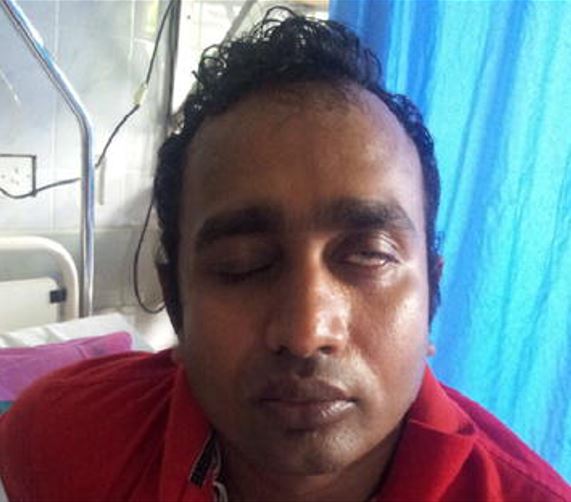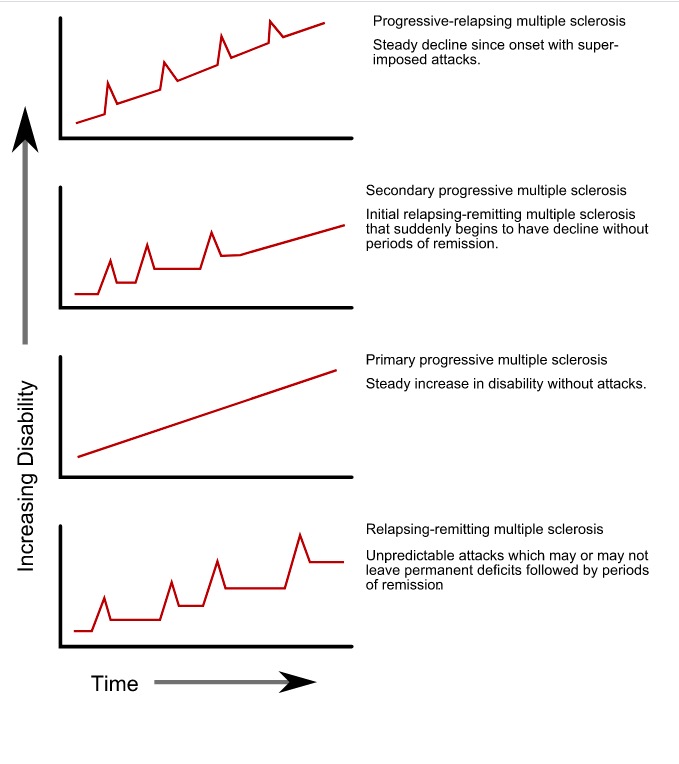Playlist
Show Playlist
Hide Playlist
Multiple Sclerosis (MS) and Guillain-Barré Syndrome (GBS)
-
Slides Autoimmune Disease.pdf
-
Download Lecture Overview
00:01 Multiple sclerosis affects the CNS and here we have a image showing the microglia in the CNS and the infiltration of T lymphocytes from the blood vessels into the CNS. 00:19 Now normally there is a blood brain barrier, but in multiple sclerosis and another-- a number of other conditions, this blood brain barrier can become compromised and inflammatory cells can enter the CNS. 00:36 Th1 cells will secrete gamma interferon leading to the activation of macrophages. 00:47 These macrophages can secrete tumor necrosis factor-α. 00:52 Also Th1 cells can help to activate cytotoxic T-lymphocytes. 01:00 And again these cytotoxic T-lymphocytes can attack the myelin sheath of the nerve cells in the CNS. 01:10 Astrocytes which are antigen presenting cells within the CNS which can present peptides to Th2 cells will be involved in this process. 01:21 And the Th2 cells can help B-cells to differentiate into plasma cells and produce autoantibodies. 01:32 The autoantibodies that are produced include anti-myelin basic protein, anti-myelin oligodendrocyte glycoprotein, anti-myelin associated glycoprotein and anti-proteolipid protein. 01:48 In this magnetic resonance image of the brain, from a patient with multiple sclerosis, we can see the typical periventricular demyelination plaques caused by this autoimmune attack. 02:07 Guillain-Barre syndrome occurs following an infection with a variety of different organisms. 02:15 For example, Campylobacter. 02:20 The autoantibodies are against peripheral nerve gangliosides. 02:26 And these are thought to arise due to molecular mimicry. 02:30 There is an acute inflammatory neuropathy with symmetrical weakness of the extremities. 02:37 Complement activation results in neuronal damage. 02:42 And in approximately 25% of patients, there is a respiratory insufficiency that develops. 02:49 So here you can see an antigen presenting cell interacting with Th2 cells. 02:55 Those Th2 cells will help activate B-lymphocytes to develop into plasma cells and produce autoantibodies. 03:04 Those autoantibodies can also then go on and activate complement, leading to the generation of the membrane attack complex, consistent of complement components C5b, C6, C7, C8 and C9. 03:19 And this will cause damage to the Schwann cells. 03:27 In myasthenia gravis, which is characterized by muscle weakness and fatigue, there are autoantibodies against the acetylcholine receptor. 03:38 There is loss or damage to receptors which is caused by complement activation. 03:47 The autoantibodies can also block the binding of acetylcholine to the receptor.
About the Lecture
The lecture Multiple Sclerosis (MS) and Guillain-Barré Syndrome (GBS) by Peter Delves, PhD is from the course Hypersensitivity and Autoimmune Disease. It contains the following chapters:
- Multiple Sclerosis
- Guillain-Barré Syndrome
- Myasthenia Gravis
Included Quiz Questions
Approximately what percent of patients with Guillain-Barré syndrome develop respiratory failure?
- 25%
- 1%
- 5%
- 10%
- 50%
Autoantibodies against which of the following proteins is most implicated in the pathogenesis of multiple sclerosis?
- Myelin basic protein
- Myeloperoxidase
- Acetylcholine receptor
- Glycoproteins 120
- Nuclear receptor
Which of the following pathologies most likely occurs in myasthenia gravis?
- Antibodies block acetylcholine receptors.
- Antibodies stimulate acetylcholine receptors.
- Antibodies inhibit acetylcholinesterase.
- Antibodies stimulate acetylcholinesterase.
- Antibodies inhibit secretion of acetylcholine.
Customer reviews
5,0 of 5 stars
| 5 Stars |
|
5 |
| 4 Stars |
|
0 |
| 3 Stars |
|
0 |
| 2 Stars |
|
0 |
| 1 Star |
|
0 |





